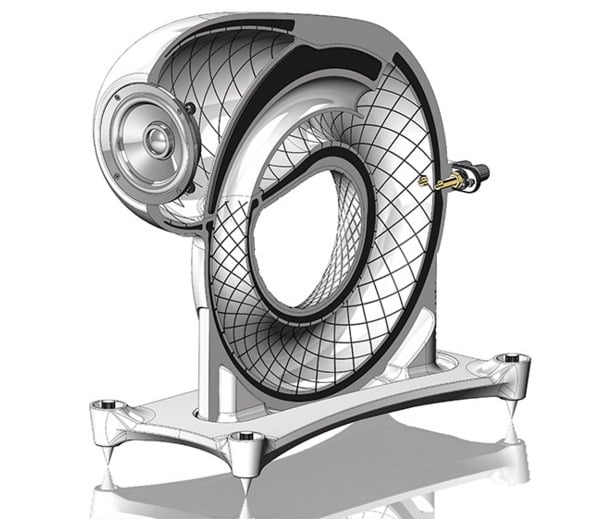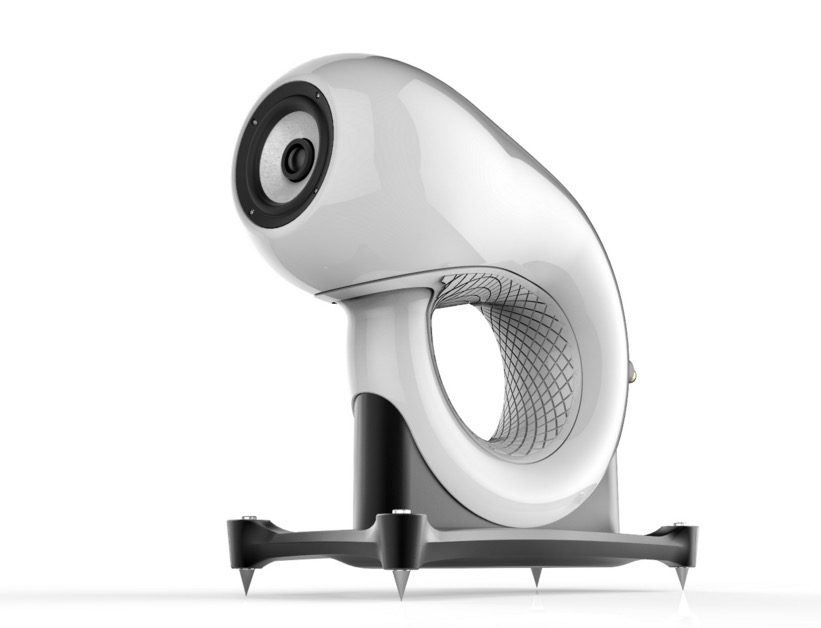
Stratasys described how they partnered with an audio designer to create a new type of speaker using 3D printing, but this could trigger an entirely new set of use cases for the technology.
What happened? Stratasys worked with Israeli acoustic designer Boaz Dekel to develop a new style of audio speaker. Here’s how they describe the new speaker, the Aleph1:
Dekel conceived of a circular speaker in which sound travels in a perpetual self-feeding loop that prevents it from interfering with the signal outputting to the front.
This particular shape, which you can see at top, is complex and challenging to produce using conventional methods. Enter 3D printing: Stratasys easily produced the object on an Objet500 Connex3. The results were good:
The Aleph1’s unique self-feeding geometry preserves the acoustic energy of the back wave and allows this energy to participate in the process of sound reproduction, resulting in a clean, open and natural sound with high detail and great separation.
Now what makes this so interesting to me is that this could be a representative case of a new field for exploration by 3D printing. Here we have a case of a custom shape for a particular purpose, and that’s what 3D printers are best at: making unique shapes.
Is it possible that there are many unique speaker designs for different purposes? Is it even possible there are specific speaker shapes that optimize for specific enclosed or outdoor spaces? One can imagine a system that could analyze a space and generate a specific speaker design for it.
Could this be a future 3D printing business?


